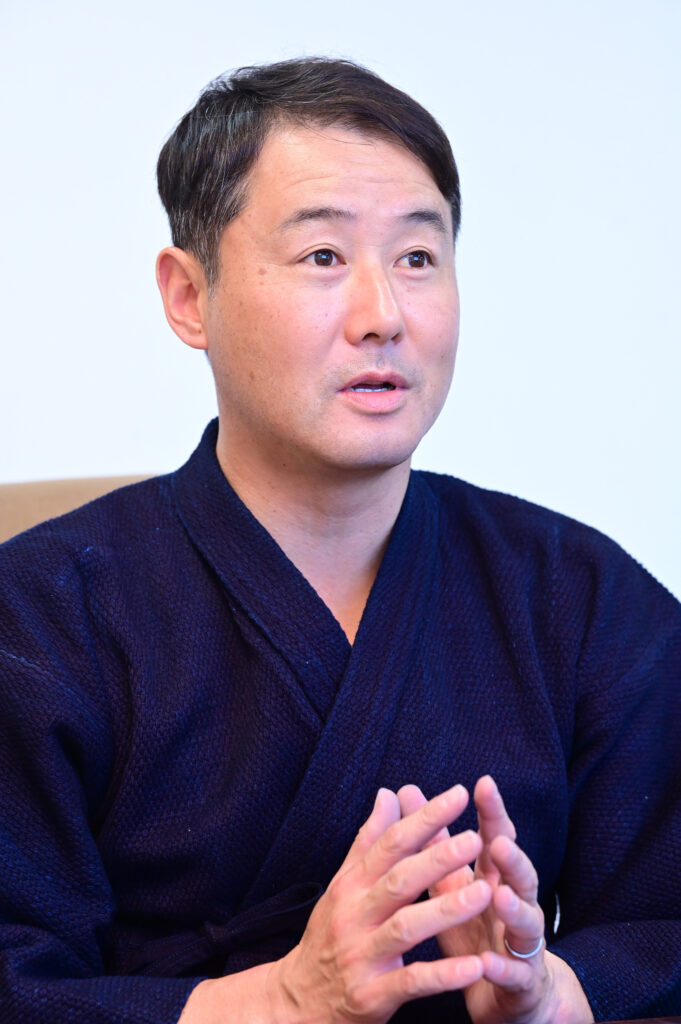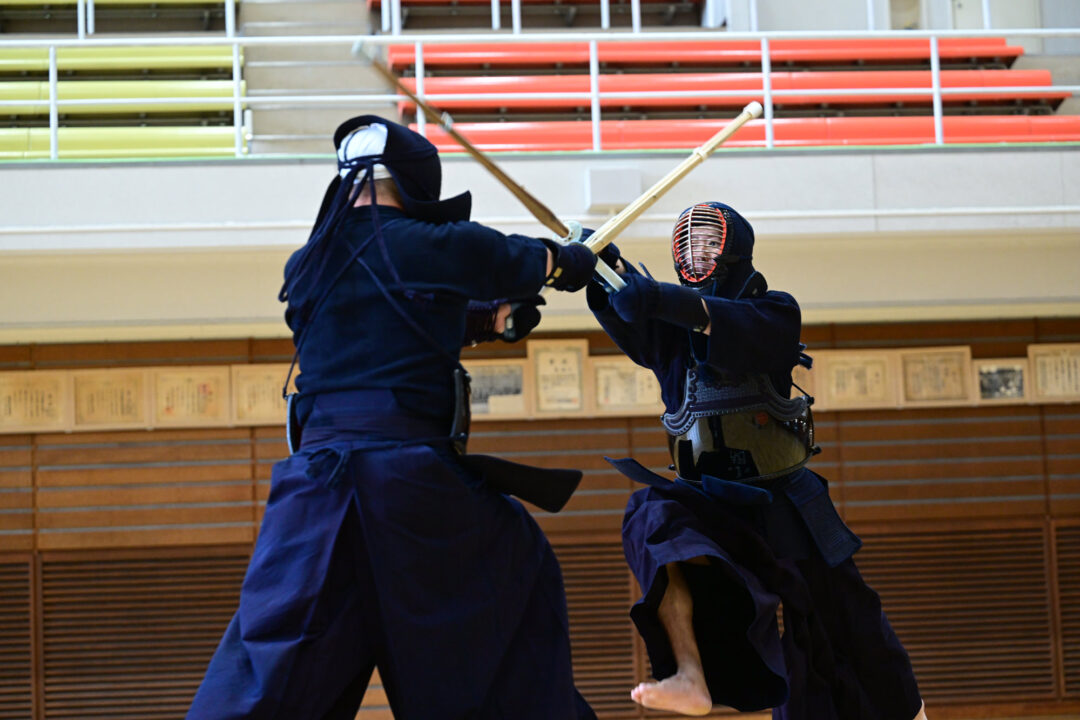KENDOJIDAI 2024.10
Koseki Sensei, who passed his 8th Dan Kendo examination this May, was highly regarded for his footwork, excelling as a key player in the Tokyo Metropolitan Police. “I always focus on developing footwork that allows me to strike smoothly at any time,” emphasized Koseki Sensei. We spoke to him about his daily practice and teaching methods.
Koseki Taro (Kyoshi 8th Dan)

In Kendo, as the saying goes, “Eyes first, feet second, spirit third, strength fourth,” after observing your opponent, the next most important aspect is footwork. I began my Kendo journey at the Uchida Kenyukai in Ichihara City, Chiba Prefecture, where I spent an entire year practicing footwork without wearing Bogu. Wanting to improve further, I started training at the Mobara Budokan, where I continued to focus on fundamentals and basic techniques.
I went on to attend Narashino High School, where I had the privilege of receiving instruction from Tokoro Masataka Sensei. His teaching placed great emphasis on footwork, dedicating sufficient time to it. In later years, his training methods, including ladder drills, were featured in books and magazines. Through his guidance, I learned firsthand the importance of strengthening the legs.
Generally, it is said that the right foot is for pressuring and the left foot for striking. To always be in a position to either strike or evade, I focus on keeping my right knee flexible and my left knee slightly tense. I believe the foundation for this was built during my years from childhood through high school.
After entering Tokai University, I enrolled in the Budo Department, which focuses on training instructors. Over the course of four years, I not only learned the importance of footwork but also how to practice Kendo in accordance with fundamental principles. University life requires one to think and act independently, or time will simply pass by. I believe it was during my student years that I began to truly reflect on what is most important in Kendo.
After graduating from Tokai University, I joined the Tokyo Metropolitan Police Department and became a dedicated Kendo Tokuren member. It was then that I became even more aware of the importance of footwork. Since I am not particularly physically gifted, I focused on using my left foot to measure distance and ensuring my body weight was firmly centered when executing techniques. I trained with the determination that, unless I did so, I would not be able to deliver a strike that met the criteria for a valid ippon.
In Kendo, it is important to apply Seme, break your opponent and deliver a strike, but I believe it is equally important not to let yourself be broken. If you execute a technique with poor posture, it is difficult to hit a valid strike, and there is also the risk of being countered. Therefore, in my regular training, I focus on maintaining a strong and stable Kamae, so that I can execute techniques from a solid position. The foundation for this is the lower body, and I believe the role of the left foot, which is the theme of this article, is crucial in that regard.
Step Firmly with the Ball of the Foot (Yusen)
Always Engage Your Core When Taking Kamae
The rest of this article is only available for Kendo Jidai International subscribers!



